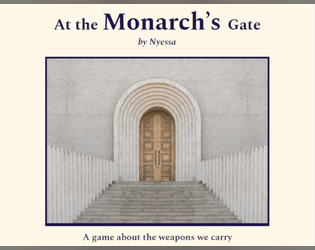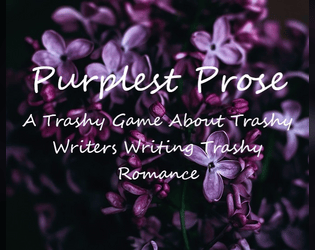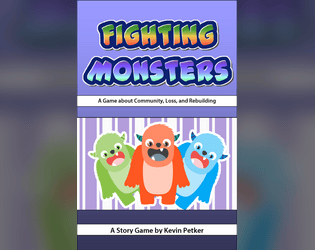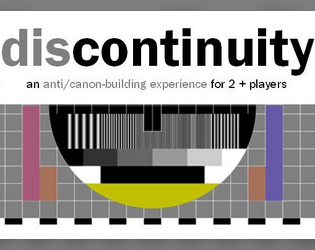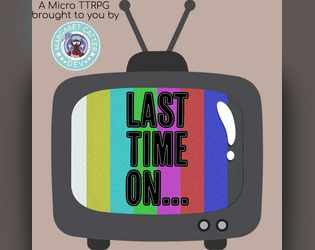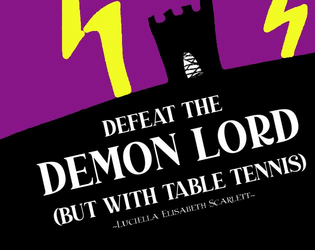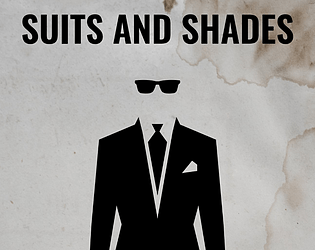
This jam is now over. It ran from 2019-08-02 04:00:00 to 2019-10-01 04:00:00. View 15 entries
Tropes are a staple in basically all forms of entertainment. Some are good, or interesting, while others can be very problematic. Sometimes media includes various tropes due to the saturation throughout, which builds biases and cements the idea in one's mind. This saturation leads to a snowball effect, where it can end up included in new media. Other times, the inclusion of a trope is a willful inclusion by the creator, be it to lampshade it, subvert it, or go all in. Escaping the use of tropes can be difficult, so for this jam, let's dive in head first, and see how we come out on the other side!
The basic gist of this, is to take a trope, you can find a non-exhaustive list on https://tvtropes.org/, and make a game about it. You can subvert it, lampshade it, or double down on it (see bullet points). The game can be any genre, length, mechanics, whatever. The only set detail is whatever trope you choose.
- Select a trope: find your own or get a random one
- Decide how you want to approach your trope and how your game will play.
- Attempt to avoid any problematic tropes involving sensitive subject matters
- Try to eliminate or minimize inclusion of any -isms/other forms of bigotry in aspects of your game
A non-comprehensive list of subjects to try to avoid or be very careful in including:
- Racism
- Sexism
- Misogyny
- Ableism
- Transphobia
- Homophobia
- Acephobia
- Biphobia
- Rape/Sexual Assault
- Domestic Violence
- Child Abuse
| Links to various tropes that may contain sensitive subject matter that should be avoided as best as possible. |
|---|
| https://tvtropes.org/pmwiki/pmwiki.php/Main/DisabilitySuperpower https://tvtropes.org/pmwiki/pmwiki.php/Main/AbuseTropes https://tvtropes.org/pmwiki/pmwiki.php/Main/Fanservice https://tvtropes.org/pmwiki/pmwiki.php/Main/ViolenceTropes https://tvtropes.org/pmwiki/pmwiki.php/Main/VictimhoodTropes https://tvtropes.org/pmwiki/pmwiki.php/Main/DysfunctionalFamilyIndex |
| Basically, this is playing bait and switch with a trope. A work makes you think a trope is going to happen, but it doesn't.
But how could people know a trope is going to happen? Well, tropes live in the minds of the audience. As such, sufficiently Trope Savvy audience members can predict a familiar trope coming based on the hints dropped by the writer. So when the writer decides to build on this expectation, only to reveal that the expected "trope" was a Red Herring while an entirely different situation results, you have a Subverted Trope. Phrased another way, the work is ultimately revealed not to be using the trope at all, but in the meantime was played up to look like it was. This is one method of leveraging a trope to give a story texture. It certainly isn't the only way. A subversion has two mandatory segments. First, the expectation is set up that something we have seen plenty of times before is coming, then that set-up is paid off with something else entirely. The set-up is a trope; the "something else" is the subversion. To put this another way, a trope of the form "X are often Y" is not subverted by every X you can think of that isn't Y. If someone is murdered and there's a butler around, but he didn't do it, that's not automatically a subversion of The Butler Did It; that's an aversion. But if the writer makes it look like a typical example of The Butler Did It, then reveals he didn't, that's a subversion. |
| Lampshade Hanging: |
|---|
| Lampshade Hanging (or, more informally, "Lampshading") is the writers' trick of dealing with any element of the story that threatens the audience's Willing Suspension of Disbelief, whether a very implausible plot development, or a particularly blatant use of a trope, by calling attention to it and simply moving on.
The reason for this counter-intuitive strategy is two-fold. First, it assures the audience that the author is aware of the implausible plot development that just happened, and that they aren't trying to slip something past the audience. Second, it assures the audience that the world of the story is like Real Life: what's implausible for you or me is just as implausible for these characters, and just as likely to provoke an incredulous response. The creators are using the tactic of self-deprecatingly pointing out their own flaws themselves, thus depriving critics and opponents of their ammunition. The Turkey City Lexicon refers to this flavor of Lampshade Hanging as a "Signal from Freud", and reminds the author that if your characters are complaining about how stupid the latest plot development is, maybe your subconscious is trying to tell you something. On the other hand, Lampshade Hanging done well can make for an entertaining piece of Medium Awareness or momentary lack of Genre Blindness. It can also be used to take care of Fridge Logic, without having to actually do anything. For this reason, it can either be seen as making a bad movie even worse or as adding clever writing and humour. This practice is also known as "hanging a clock on it", "hanging a lantern on it", or "spotlighting it". In the film industry it's sometimes called "hanging a red flag" on something, after the screenwriting adage, "To hang a red flag on something takes the curse off of it," meaning that to lampshade something decreases the negative effects it might otherwise have. Teodolinda Barolini referred to this as "the Geryon Principle" in reference to how Dante narrates how unbelievable his "true" story is the more fantastical it gets. We went with our title because it's the one used in the Mutant Enemy bullpen. |
There is the chance that if you use the random link that you may land on a problematic, and possibly triggering trope. If that is something you wish to avoid, you can opt to not use the random link. If you opt to not use the random link, you are free to pull a trope from any piece of media you want.
The end goal for this jam, is to
collect the games, with the creators permission, into a bundle, or
multiple bundles depending on submission count, to fund a pool to
support PoC creators who can benefit from monetary support.
Submissions(14)
No submissions match your filter



